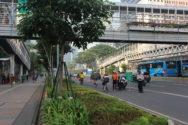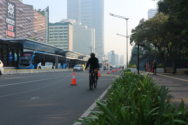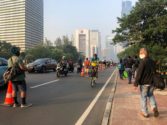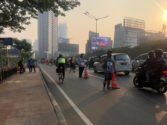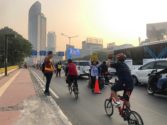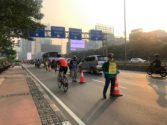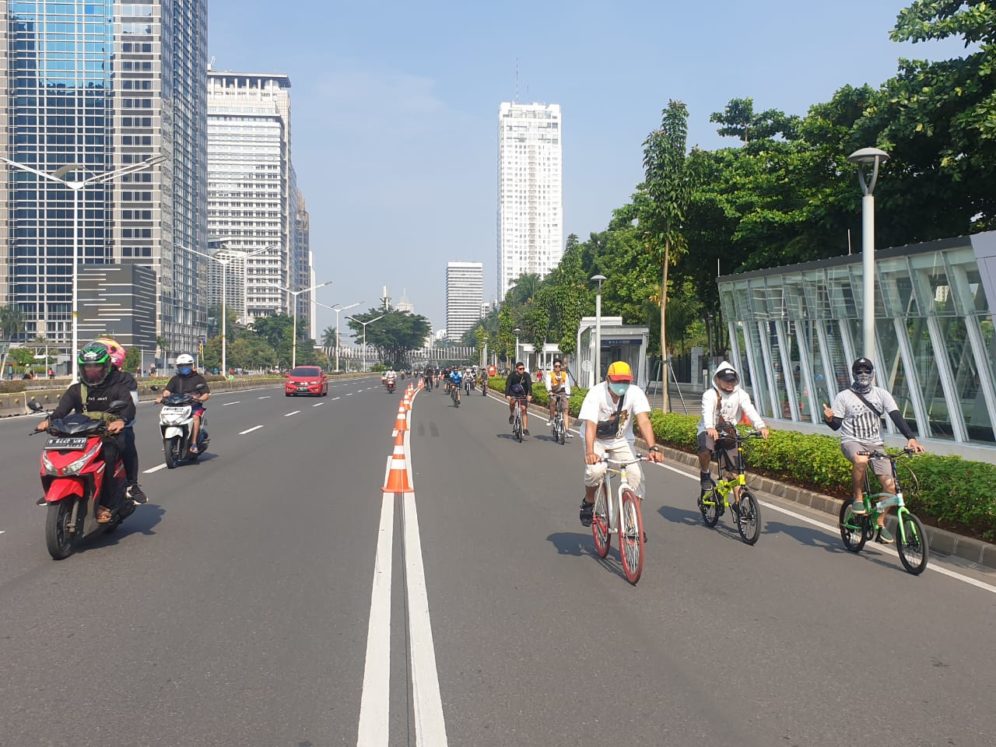
July 10, 2020
During Coronavirus, Jakarta’s Cycling Grows as does Police Backlash
Cities all over the world are realizing the advantages of moving around without a car – cycling, walking, scooting, or even roller blading, are all gaining popularity in the time of the coronavirus. As cities around the world are beginning to open up their economies and hundreds of millions of workers are returning to daily commutes, safety is top of mind.
While many mass transit systems are managing to bring back pre-COVID levels of ridership, others are reluctant to resume commutes on crowded public transit, and are turning to other ways of commuting. Cycling has emerged as ideal forms of commuting while physical distancing.
Not only are bicycle sales booming worldwide, but in many cities, the post-confinement period has ushered in an expansion of cycling infrastructure, particularly with cycleways being expanded or built. Bogotá expanded its already 550 kilometers of cycleways by 80 kilometers and built them along the Transmilenio pathway. European cities like Milan, Madrid, and Berlin are expanding current cycleways or building new, temporary ones. In Mexico City, one of the major roads, Avenida de Los Insurgentes, has opened up a lane for cyclists to decrease the high ridership of the Metrobus. Turning this major thoroughfare into a cycling route has demonstrated the appeal and potential of cycling in one of the largest cities in the world. China, now ahead of most of the world in terms of economic and public health recovery, has also experienced an increase in cycling throughout its cities. Supporting cycling infrastructure during quarantine has become a winning strategy to support outdoor activities and commuters reluctant to use transit or drive. While many of these infrastructure shifts are technically temporary, with hope, the popularity and success of these pathways will support their permanence. Cycling has become an obvious and easy form of transportation that allows travelers to maintain social distance from each other.
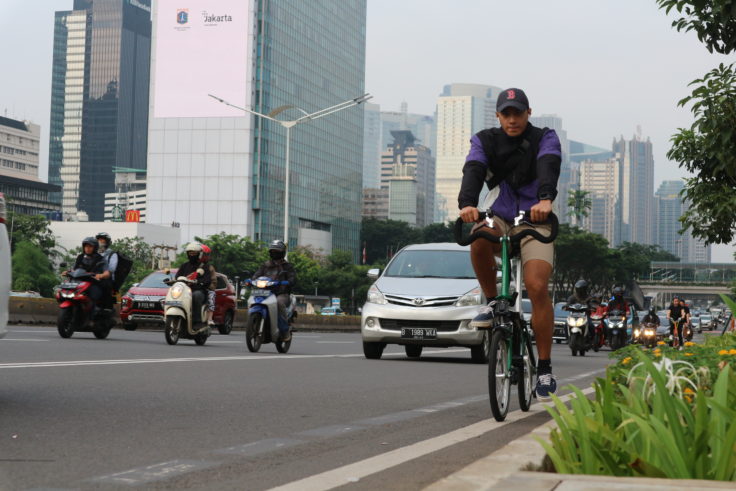
In Jakarta, a city known for crippling traffic congestion, cycling has taken off with significant growth. This past month, as Jakarta has begun to ease its large-scale social restrictions, cycling in the city has increased by 500%, and by Dukuh Atas station along Jl.Sudirman ridership was higher by 1000%. This is backed up by ITDP Indonesia’s annual surveying of cycling counts. In one location, where 21 cyclists were observed on one day in October 2019, found 235 in June 2020.

The city of Jakarta has opened up a major road, Jl. Sudirman and Jl. Thamrin, to a pop up bicycle lane. ITDP Indonesia has been critical in the growth and expansion of cycling in Jakarta through years of advocacy. ITDP Indonesia provided technical assistance with the cycling lane design and network plan, and worked with the local cycling community, government, and schools to promote the advantages of cycling. ITDP Indonesia’s work over the last several year, which included hosting cycle rides with the Governor of Jakarta, promoting Car Free Days, and raising interest in cycling has paid off during COVID. While Jakarta still has a ways to go, such as making much of temporary cycle lanes permanent, it is benefitting from this long term advocacy which has laid the groundwork for increased cycling. Unfortunately, like many cities worldwide, Jakarta’s plans are at risk with major cuts to the municipal budget. Despite this, progress continues, as does public support.
One of the challenges Jakarta has encountered is a common obstacle: a lack of support from the police. As in many other places, this is both a cultural and structural problem. When the Department of Transportation, which is overseen by the Governor of Jakarta (head of the municipality), decided to create a pop up bicycle lane, the police, (supported by the central government) removed the cones to open the lane up for vehicular traffic. Largely due to political pressure from public support of cycling, a compromise was reached: to open the bicycle lane for commuters from 6-8 am and 4-6 pm. At other hours the lane is reverted back to vehicular traffic. This compromise, despite being unfair to the large majority of Jakartans who commute outside these hours, is still challenged. The police continue to act independently of the Transportation Department and continue to remove cones during the allotted cycle lane hours. While there is public support for the cycle lane, the lack of municipal jurisdiction over the police makes enforcement hugely difficult.
This bicycle focused backlash from security forces like the police is not uncommon or new. Throughout the United States and particularly in New York City, the police have been criticized for disproportionately targeting people of color in bicycle infractions and engaging in anti-cyclist behavior like parking their cars in cyclepaths. Much of this behavior is part of a larger issue in a judicial system that often finds drivers who have fatally struck pedestrians or cyclists without fault. At a moment of reckoning worldwide: with governmental systems challenged, economies in turmoil, livelihoods halted, and a pandemic that continues to ravage peoples’ safety and health, rethinking something like city streets is crucial.
The public enthusiasm for cycling in Jakarta is mimicked worldwide and should be a wakeup call for municipal governments to take steps towards reconfiguring their urban spaces. Without a real end in sight for many nations, the bicycle can be a tool for a movement that allows for distance from others and doesn’t contribute to already breathtaking traffic congestion. This period of such change offers an opportunity for improvements and a shift to a new normal that could, in fact, be more equitable and more sustainable than before. What is clear is that cyclists want to stay in the lane, and with hope, more cities will adopt measures to support them in doing so.



